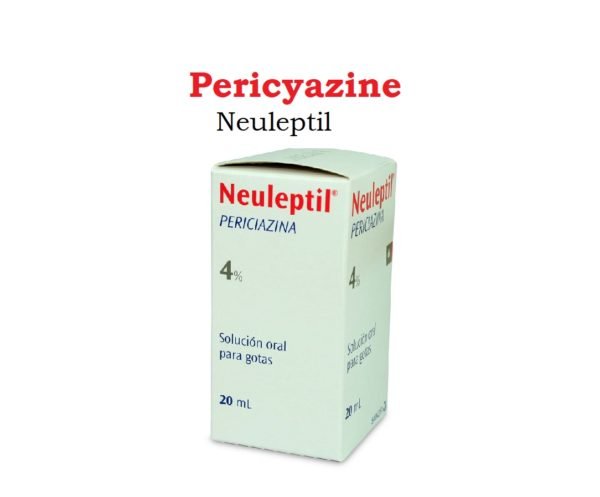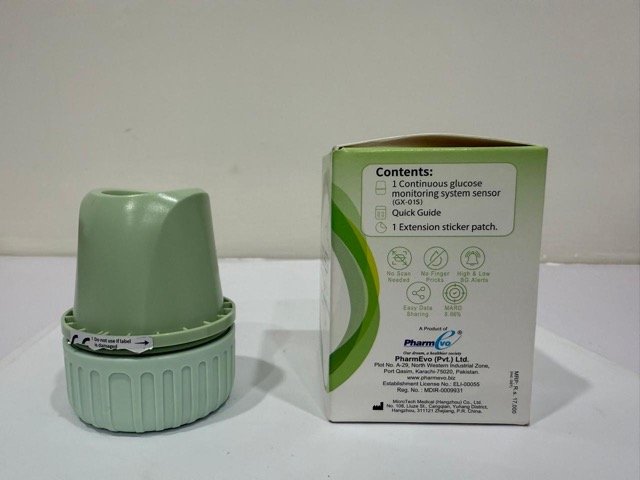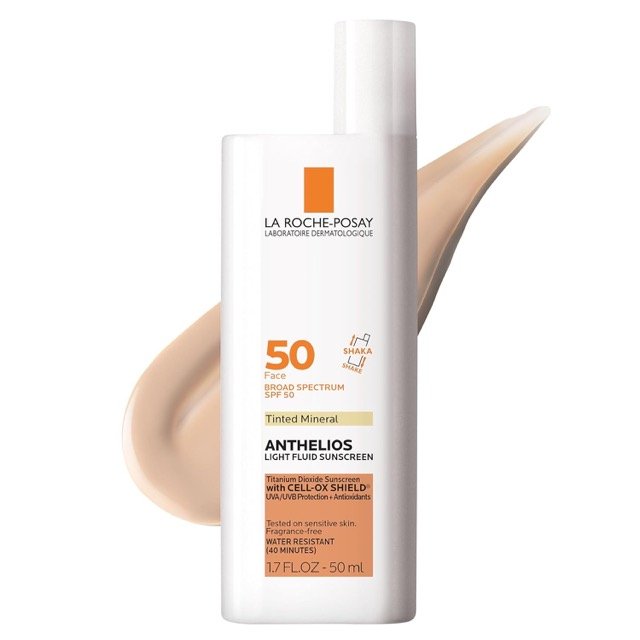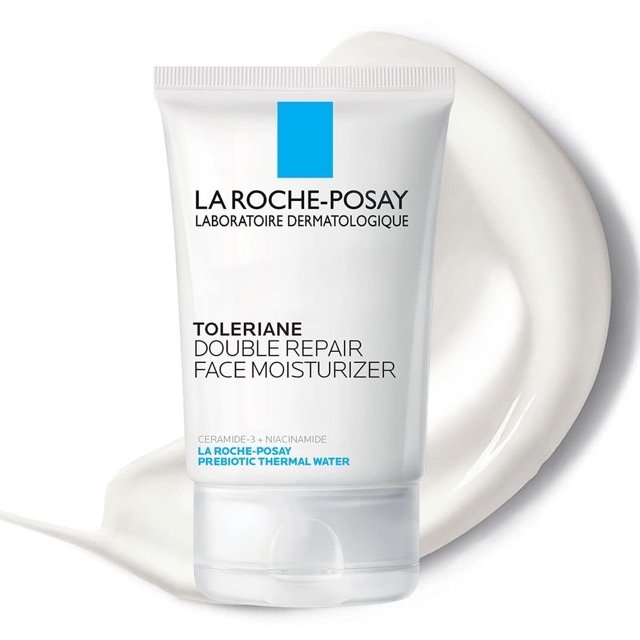Pericyazine or Periciazine is available by the brand name of Neuleptil among others. It is a typical antipsychotic drug that has similar cardiovascular and antihistamine like effects as that of chlorpromazine but has greater anti serotonin effects.
Indications of Pericyazine (Neuleptil):
-
Psychosis:
- It is recommended as an adjuvant therapy for certain psychotic individuals to help them manage their impulsivity, violence, or hostility.
Note: Not approved in the US.
Neuleptil (Pericyazine) dose in adult
Neuleptil dose in the treatment of Psychosis:
- Initial:In the morning, take 5 to 20 mg per mouth, and then in the evening, take 10 to 40 mg.
- Reduce the dose to the lowest effective level for maintenance.
Note: It may be appropriate to use lower doses (2.5 to 15 mg in the morning and 5 to 30 mg in the evening). In general, it is best to start with a smaller dosage and gradually raise it based on effect and tolerance.
Neuleptil (Pericyazine) dose in children:
Neuleptil dose in the treatment of Psychosis:
-
Children ≥5 years and Adolescents:
- First thing in the morning, 2.5 to 10 mg per oral, then 5 to 30 mg in the evening.
In general, it is best to start with a smaller dosage and gradually raise it based on effect and tolerance.
- First thing in the morning, 2.5 to 10 mg per oral, then 5 to 30 mg in the evening.
Pregnancy Risk Category: C
- If antipsychotics were used in the third trimester, extrapyramidal symptoms or withdrawal symptoms like agitation, feeding disorders, hypotonia and hypertonia, respiratory distress (somniolence), and tremor in infants can be seen.
- Negative events can be severe or self-limiting.
Neuleptil Dose adjustment in renal disease:
There are no dosage adjustments provided in the manufacturer’s labeling.
Neuleptil Dose adjustment in liver disease:
Its use is contraindicated in hepatic derangement.
Side effects of Pericyazine (Neuleptil):
-
Cardiovascular:
- Atrioventricular Block
- Cardiac Arrhythmias
- ECG Changes
- Edema
- Hypotension
- Orthostatic Hypotension
- Prolonged Q-T Interval On ECG
- Pulmonary Embolism
- Sinus Tachycardia
- Tachycardia
- Venous Thromboembolism
- Ventricular Fibrillation
-
Central Nervous System:
- Aggressive Behavior
- Agitation
- Disruption Of Body Temperature Regulation
- Disturbed Sleep
- Dizziness
- Drowsiness
- EEG Pattern Changes
- Extrapyramidal Reaction (Tremor
- Akathisia
- Dystonia
- Dyskinesia
- Oculogyric
- Opisthotonos
- Hyperreflexia
- Pseudo-Parkinsonism
- Rigidity
- Sialorrhea)
- Headache
- Hyperpyrexia
- Insomnia
- Neuroleptic Malignant Syndrome
- Psychomotor Retardation
- Psychosis (Paradoxical)
- Seizure
- Tardive Dyskinesia
- Temperature Regulation Impaired
-
Dermatologic:
- Diaphoresis
- Skin Photosensitivity
- Skin Pigmentation (Prolonged Therapy)
-
Endocrine & Metabolic:
- Change In Libido
- Diabetic Ketoacidosis
- Galactorrhea
- Gynecomastia
- Hyperglycemia
- Menstrual Disease (Including Delayed Ovulation)
- Weight Changes
-
Gastrointestinal:
- Cholestasis
- Constipation
- Diarrhea
- Fecal Impaction
- Increased Appetite
- Nausea
- Paralytic Ileus
- Vomiting
- Xerostomia
-
Genitourinary:
- Ejaculatory Disorder
- False Positive Pregnancy Test
- Priapism
- Urinary Incontinence
-
Hematologic & Oncologic:
- Agranulocytosis
-
Hepatic:
- Cholestatic Jaundice
-
Hypersensitivity:
- Angioedema
-
Ophthalmic:
- Blurred Vision
- Corneal Deposits (Prolonged Therapy)
- Glaucoma
- Pigment Deposits On Lens
-
Respiratory:
- Asthma
- Laryngeal Edema
- Nasal Congestion
- Pneumonia
- Pneumonitis
Contraindications to Pericyazine (Neuleptil):
- Hypersensitivity
- Blood dyscrasia
- Liver impairment
- Circulatory collapse
- Patients who receive spinal or regional anesthesia
- Intoxication with CNS depression medications, such as ethanol, hypnotics and opioids, can cause altered states of consciousness or coma, especially when they are combined with hypnotics, analgesics and opioids.
Warnings and precautions
-
Modified cardiac conduction
- Pericyazine can cause life-threatening arrhythmias like QT prolongation
- Patients with congenital QT syndrome, hypokalemia or hypomagnesemia, hypothyroidism and concomitant medications that can prolong QT should be cautious about using the drug.
-
Anticholinergic effects
- Phenothiazines can cause anticholinergic reactions, including constipation, urinary retention, xerostomia, and blurred vision.
- This is because of decreased gastrointestinal motility, paralytic-ileus, urinary retention and xerostomia.
-
Blood dyscrasias
- Antipsychotic therapy can cause blood dyscrasias such as granulocytopenia, agranulocytosis and neutropenia.
- At baseline, complete blood counts should always be checked and then every other month thereafter.
- Stop all therapy at the first sign of blood dyscrasias
- Patients with blood disorders should not take pericyazine.
-
Depression in the CNS:
- CNS depression can lead to impairment of physical and mental abilities. It is important to warn patients about driving or operating machinery.
-
Esophageal dysmotility/aspiration
- Pericyazine can cause esophageal dysmotility or aspiration.
- Seniors over 75 years are more at risk of aspiration pneumonia (ie Alzheimer's disease).
-
Extrapyramidal symptoms
- Extrapyramidal symptoms (EPS) can include pseudo parkinsonism and acute dystonic reactions.
- Dystonia is a condition that can be caused by a combination of factors: male gender, young age, higher doses, and use of antipsychotics.
- T tardive dyskinesia is a condition that can be caused by the following risk factors: elderly, female gender, postmenopausal status and alcoholics, DM Parkinson disease symptoms, pseudo parkinsonism symptoms.
- With tardive dyskinesia symptoms or signs, therapy should be stopped immediately.
-
Hyperprolactinemia
- This can cause a decrease in bone mineral density, especially if it is combined with prolonged hyperprolactinemia.
-
Hypersensitivity
- Patients with hypersensitivity to phenothiazines should be treated only if necessary.
-
Neuroleptic malignant Syndrome (NMS).
- A neuroleptic malignant syndrome can present with fever, rigidity of the muscles, or instability.
- NMS is most likely to affect people with Parkinson's disease and Lewy body dementia.
- With the onset NMS, it is important to stop all treatment immediately.
-
Orthostatic hypotension
- Orthostatic hypotension can be caused by pericyazine in patients who have hypokalemia, cerebrovascular diseases, heart disease, or are taking concurrent medications that may increase the risk of hypotension/bradycardia.
-
Pigmentary retinopathy
- Long-term therapy can lead to pigmentary retinopathy or corneal deposits. If you notice these symptoms, it is best to stop the treatment immediately.
-
Temperature regulation
- It is possible to have impaired core body temperature regulation
- Dehydration, strenuous exercise and heat exposure are all risk factors.
-
Venous thromboembolism
- Patients with high risk factors for thrombosis should not use VTE.
-
Weight loss
- Weight gain may be possible, therefore it is important to monitor your weight during treatment.
-
Cardiovascular disease
- Patients with severe cardiovascular disease should be cautious.
-
Dementia
- Antipsychotics are more dangerous than placebo for elderly patients suffering from dementia-related psychosis. This is often due to cardiovascular events like heart disease, sudden death, and infections (eg pneumonia).
- Patients with Parkinson's disease or Lewy body dementia should not use it.
- Due to the lower risk of side effects, second-generation antipsychotics should be preferred over first-generation ones in dementia-related psychosis patients.
- For elderly patients with dementia, Pericyazine has not been approved.
-
Diabetes mellitus
- It can lead to glucose intolerance and hyperglycemia so it should not be used in patients with diabetes.
- During therapy, it is important to monitor blood glucose levels.
- Diabetic ketoacidosis can occur in patients who have not had hyperglycemia.
-
Pheochromocytoma
- Patients with pheochromocytomas should be cautious as severe hypotension can occur.
-
Prolactin-dependent tumors
- Pericyazine can cause an increase in prolactin levels.
-
Seizure disorder
- Patients suffering from untreated seizure disorders, should not use it.
- Patients with brain injury, alcoholism, history or seizures should not use it.
Pericyazine (United States: Not available): Drug Interaction
|
Acetylcholinesterase Inhibitors |
May diminish the therapeutic effect of Anticholinergic Agents. Anticholinergic Agents may diminish the therapeutic effect of Acetylcholinesterase Inhibitors. |
|
Acetylcholinesterase Inhibitors (Central) |
May enhance the neurotoxic (central) effect of Antipsychotic Agents. Severe extrapyramidal symptoms have occurred in some patients. |
|
Alcohol (Ethyl) |
CNS Depressants may enhance the CNS depressant effect of Alcohol (Ethyl). |
|
Alizapride |
May enhance the CNS depressant effect of CNS Depressants. |
|
Amifampridine |
Agents With Seizure Threshold Lowering Potential may enhance the neuroexcitatory and/or seizure-potentiating effect of Amifampridine. |
|
Aminolevulinic Acid (Topical) |
Photosensitizing Agents may enhance the photosensitizing effect of Aminolevulinic Acid (Topical). |
|
Amphetamines |
Antipsychotic Agents may diminish the stimulatory effect of Amphetamines. |
|
Antacids |
May decrease the absorption of Antipsychotic Agents (Phenothiazines). |
|
Anticholinergic Agents |
May enhance the adverse/toxic effect of other Anticholinergic Agents. |
|
Antidiabetic Agents |
Hyperglycemia-Associated Agents may diminish the therapeutic effect of Antidiabetic Agents. |
|
Antimalarial Agents |
May increase the serum concentration of Antipsychotic Agents (Phenothiazines). |
|
Beta-Blockers |
|
|
Botulinum Toxin-Containing Products |
May enhance the anticholinergic effect of Anticholinergic Agents. |
|
Brexanolone |
CNS Depressants may enhance the CNS depressant effect of Brexanolone. |
|
Brimonidine (Topical) |
May enhance the CNS depressant effect of CNS Depressants. |
|
BuPROPion |
May enhance the neuroexcitatory and/or seizure-potentiating effect of Agents With Seizure Threshold Lowering Potential. |
|
Cannabidiol |
May enhance the CNS depressant effect of CNS Depressants. |
|
Cannabis |
May enhance the CNS depressant effect of CNS Depressants. |
|
Chloral Betaine |
May enhance the adverse/toxic effect of Anticholinergic Agents. |
|
Chlorphenesin Carbamate |
May enhance the adverse/toxic effect of Antipsychotic Agents (Phenothiazines). |
|
Chlorphenesin Carbamate |
CNS depressants' harmful or toxic effects could be increased. |
|
CNS Depressants |
Other CNS depressants' harmful or toxic effects might be exacerbated. |
|
Deutetrabenazine |
Could intensify the negative or hazardous effects of antipsychotic drugs. Particularly, there may be a higher chance of developing akathisia, parkinsonism, or neuroleptic malignant syndrome. |
|
Dimethindene (Topical) |
CNS depressants may have an enhanced CNS depressant impact. |
|
Doxylamine |
CNS depressants may have an enhanced CNS depressant impact. Management: The producer of the pregnancy-safe drug Diclegis (doxylamine/pyridoxine) particularly advises against combining it with other CNS depressants. |
|
Dronabinol |
CNS depressants may have an enhanced CNS depressant impact. |
|
Esketamine |
CNS depressants may have an enhanced CNS depressant impact. |
|
Gastrointestinal Agents (Prokinetic) |
Anticholinergic Agents may diminish the therapeutic effect of Gastrointestinal Agents (Prokinetic). |
|
Glucagon |
Anticholinergic Agents may enhance the adverse/toxic effect of Glucagon. Specifically, the risk of gastrointestinal adverse effects may be increased. |
|
Guanethidine |
Antipsychotic Agents may diminish the therapeutic effect of Guanethidine. |
|
HydrOXYzine |
May enhance the CNS depressant effect of CNS Depressants. |
|
Itopride |
Anticholinergic Agents may diminish the therapeutic effect of Itopride. |
|
Kava Kava |
May enhance the adverse/toxic effect of CNS Depressants. |
|
Lithium |
May enhance the neurotoxic effect of Antipsychotic Agents. Lithium may decrease the serum concentration of Antipsychotic Agents. Specifically noted with chlorpromazine. |
|
Lofexidine |
CNS depressants may have an enhanced CNS depressant impact. Management: Separate drug interaction monographs go into further detail about the medications indicated as exceptions to this book. |
|
Magnesium Sulfate |
May enhance the CNS depressant effect of CNS Depressants. |
|
Methylphenidate |
Antipsychotic Agents may enhance the adverse/toxic effect of Methylphenidate. Methylphenidate may enhance the adverse/toxic effect of Antipsychotic Agents. |
|
MetyroSINE |
CNS Depressants may enhance the sedative effect of MetyroSINE. |
|
MetyroSINE |
May enhance the adverse/toxic effect of Antipsychotic Agents. |
|
Mianserin |
May enhance the anticholinergic effect of Anticholinergic Agents. |
|
Minocycline |
May enhance the CNS depressant effect of CNS Depressants. |
|
Mirabegron |
Anticholinergic Agents may enhance the adverse/toxic effect of Mirabegron. |
|
Mirtazapine |
CNS Depressants may enhance the CNS depressant effect of Mirtazapine. |
|
Nabilone |
May enhance the CNS depressant effect of CNS Depressants. |
|
Nitroglycerin |
Anticholinergic Agents may decrease the absorption of Nitroglycerin. Specifically, anticholinergic agents may decrease the dissolution of sublingual nitroglycerin tablets, possibly impairing or slowing nitroglycerin absorption. |
|
Porfimer |
The photosensitizing effect of Porfimer may be strengthened by photosensitizing agents. |
|
Quinagolide |
Quinagolide's therapeutic effects may be diminished by antipsychotic drugs. |
|
Ramosetron |
Anticholinergic Agents may enhance the constipating effect of Ramosetron. |
|
Rufinamide |
May enhance the adverse/toxic effect of CNS Depressants. Specifically, sleepiness and dizziness may be enhanced. |
|
Selective Serotonin Reuptake Inhibitors |
CNS Depressants may enhance the adverse/toxic effect of Selective Serotonin Reuptake Inhibitors. Specifically, the risk of psychomotor impairment may be enhanced. |
|
Serotonin Modulators |
May enhance the adverse/toxic effect of Antipsychotic Agents. Specifically, serotonin modulators may enhance dopamine blockade, possibly increasing the risk for neuroleptic malignant syndrome. Antipsychotic Agents may enhance the serotonergic effect of Serotonin Modulators. This could result in serotonin syndrome. Exceptions: Nicergoline. |
|
Serotonin Reuptake Inhibitor/Antagonists |
Antipsychotic Agents (Phenothiazines) may enhance the adverse/toxic effect of Serotonin Reuptake Inhibitor/Antagonists. Specifically, this may be manifest as symptoms consistent with serotonin syndrome or neuroleptic malignant syndrome. Serotonin Reuptake Inhibitor/Antagonists may enhance the hypotensive effect of Antipsychotic Agents (Phenothiazines). |
|
Tetrabenazine |
May enhance the adverse/toxic effect of Antipsychotic Agents. |
|
Tetrahydrocannabinol |
May enhance the CNS depressant effect of CNS Depressants. |
|
Tetrahydrocannabinol and Cannabidiol |
May enhance the CNS depressant effect of CNS Depressants. |
|
Thiazide and Thiazide-Like Diuretics |
Anticholinergic Agents may increase the serum concentration of Thiazide and Thiazide-Like Diuretics. |
|
Thiopental |
Antipsychotic Agents (Phenothiazines) may enhance the adverse/toxic effect of Thiopental. |
|
Topiramate |
Anticholinergic Agents may enhance the adverse/toxic effect of Topiramate. |
|
Trimeprazine |
May enhance the CNS depressant effect of CNS Depressants. |
|
Verteporfin |
Photosensitizing Agents may enhance the photosensitizing effect of Verteporfin. |
|
Risk Factor D (Consider therapy modification) |
|
|
Anti-Parkinson Agents (Dopamine Agonist) |
Antipsychotic Agents (First Generation [Typical]) may diminish the therapeutic effect of Anti-Parkinson Agents (Dopamine Agonist). Anti-Parkinson Agents (Dopamine Agonist) may diminish the therapeutic effect of Antipsychotic Agents (First Generation [Typical]). Management: Avoid concomitant therapy if possible and monitor for decreased effects of both agents when these combinations cannot be avoided. Atypical antipsychotics such as clozapine and quetiapine may be less likely to reduce the effects of antiParkinson agents. |
|
Blonanserin |
CNS Depressants may enhance the CNS depressant effect of Blonanserin. |
|
Buprenorphine |
CNS Depressants may enhance the CNS depressant effect of Buprenorphine. Management: Consider reduced doses of other CNS depressants, and avoiding such drugs in patients at high risk of buprenorphine overuse/self-injection. Initiate buprenorphine at lower doses in patients already receiving CNS depressants. |
|
Chlormethiazole |
May enhance the CNS depressant effect of CNS Depressants. Management: Monitor closely for evidence of excessive CNS depression. The chlormethiazole labeling states that an appropriately reduced dose should be used if such a combination must be used. |
|
Droperidol |
May enhance the CNS depressant effect of CNS Depressants. Management: Consider dose reductions of droperidol or of other CNS agents (eg, opioids, barbiturates) with concomitant use. Exceptions to this monograph are discussed in further detail in separate drug interaction monographs. |
|
Flunitrazepam |
CNS Depressants may enhance the CNS depressant effect of Flunitrazepam. |
|
HYDROcodone |
CNS Depressants may enhance the CNS depressant effect of HYDROcodone. Management: Avoid concomitant use of hydrocodone and benzodiazepines or other CNS depressants when possible. These agents should only be combined if alternative treatment options are inadequate. If combined, limit the dosages and duration of each drug. |
|
Iohexol |
Agents With Seizure Threshold Lowering Potential may enhance the adverse/toxic effect of Iohexol. Specifically, the risk for seizures may be increased. Management: Discontinue agents that may lower the seizure threshold 48 hours prior to intrathecal use of iohexol. Wait at least 24 hours after the procedure to resume such agents. In nonelective procedures, consider use of prophylactic anticonvulsants. |
|
Iomeprol |
Agents With Seizure Threshold Lowering Potential may enhance the adverse/toxic effect of Iomeprol. Specifically, the risk for seizures may be increased. Management: Discontinue agents that may lower the seizure threshold 48 hours prior to intrathecal use of iomeprol. Wait at least 24 hours after the procedure to resume such agents. In nonelective procedures, consider use of prophylactic anticonvulsants. |
|
Iopamidol |
Agents With Seizure Threshold Lowering Potential may enhance the adverse/toxic effect of Iopamidol. Specifically, the risk for seizures may be increased. Management: Discontinue agents that may lower the seizure threshold 48 hours prior to intrathecal use of iopamidol. Wait at least 24 hours after the procedure to resume such agents. In nonelective procedures, consider use of prophylactic anticonvulsants. |
|
Mequitazine |
Antipsychotic Agents may enhance the arrhythmogenic effect of Mequitazine. Management: Consider alternatives to one of these agents when possible. While this combination is not specifically contraindicated, mequitazine labeling describes this combination as discouraged. |
|
Methotrimeprazine |
CNS Depressants may enhance the CNS depressant effect of Methotrimeprazine. Methotrimeprazine may enhance the CNS depressant effect of CNS Depressants. Management: Reduce adult dose of CNS depressant agents by 50% with initiation of concomitant methotrimeprazine therapy. Further CNS depressant dosage adjustments should be initiated only after clinically effective methotrimeprazine dose is established. |
|
Opioid Agonists |
CNS Depressants may enhance the CNS depressant effect of Opioid Agonists. Management: Avoid concomitant use of opioid agonists and benzodiazepines or other CNS depressants when possible. These agents should only be combined if alternative treatment options are inadequate. If combined, limit the dosages and duration of each drug. |
|
OxyCODONE |
CNS Depressants may enhance the CNS depressant effect of OxyCODONE. Management: Avoid concomitant use of oxycodone and benzodiazepines or other CNS depressants when possible. These agents should only be combined if alternative treatment options are inadequate. If combined, limit the dosages and duration of each drug. |
|
Perampanel |
May enhance the CNS depressant effect of CNS Depressants. Management: Patients taking perampanel with any other drug that has CNS depressant activities should avoid complex and high-risk activities, particularly those such as driving that require alertness and coordination, until they have experience using the combination. |
|
Pramlintide |
May enhance the anticholinergic effect of Anticholinergic Agents. These effects are specific to the GI tract. |
|
Secretin |
Anticholinergic Agents may diminish the therapeutic effect of Secretin. Management: Avoid concomitant use of anticholinergic agents and secretin. Discontinue anticholinergic agents at least 5 half-lives prior to administration of secretin. |
|
Sodium Oxybate |
May enhance the CNS depressant effect of CNS Depressants. Management: Consider alternatives to combined use. When combined use is needed, consider minimizing doses of one or more drugs. Use of sodium oxybate with alcohol or sedative hypnotics is contraindicated. |
|
Suvorexant |
CNS Depressants may enhance the CNS depressant effect of Suvorexant. Management: Dose reduction of suvorexant and/or any other CNS depressant may be necessary. Use of suvorexant with alcohol is not recommended, and the use of suvorexant with any other drug to treat insomnia is not recommended. |
|
Tapentadol |
May enhance the CNS depressant effect of CNS Depressants. Management: Avoid concomitant use of tapentadol and benzodiazepines or other CNS depressants when possible. These agents should only be combined if alternative treatment options are inadequate. If combined, limit the dosages and duration of each drug. |
|
Zolpidem |
CNS Depressants may enhance the CNS depressant effect of Zolpidem. Management: Reduce the Intermezzo brand sublingual zolpidem adult dose to 1.75 mg for men who are also receiving other CNS depressants. No such dose change is recommended for women. Avoid use with other CNS depressants at bedtime; avoid use with alcohol. |
|
Risk Factor X (Avoid combination) |
|
|
Aclidinium |
May enhance the anticholinergic effect of Anticholinergic Agents. |
|
Aminolevulinic Acid (Systemic) |
Photosensitizing Agents may enhance the photosensitizing effect of Aminolevulinic Acid (Systemic). |
|
Amisulpride |
Antipsychotic Agents may enhance the adverse/toxic effect of Amisulpride. Management: Drugs listed as exceptions to this monograph are discussed in further detail in separate drug interaction monographs. |
|
Azelastine (Nasal) |
CNS Depressants may enhance the CNS depressant effect of Azelastine (Nasal). |
|
Bromopride |
May enhance the adverse/toxic effect of Antipsychotic Agents. |
|
Bromperidol |
May enhance the CNS depressant effect of CNS Depressants. |
|
Cimetropium |
Anticholinergic Agents may enhance the anticholinergic effect of Cimetropium. |
|
Dronedarone |
Antipsychotic Agents (Phenothiazines) may enhance the arrhythmogenic effect of Dronedarone. |
|
Eluxadoline |
Anticholinergic Agents may enhance the constipating effect of Eluxadoline. |
|
Glycopyrrolate (Oral Inhalation) |
Anticholinergic Agents may enhance the anticholinergic effect of Glycopyrrolate (Oral Inhalation). |
|
Glycopyrronium (Topical) |
May enhance the anticholinergic effect of Anticholinergic Agents. |
|
Ipratropium (Oral Inhalation) |
May enhance the anticholinergic effect of Anticholinergic Agents. |
|
Levosulpiride |
Anticholinergic Agents may diminish the therapeutic effect of Levosulpiride. |
|
Metoclopramide |
May enhance the adverse/toxic effect of Antipsychotic Agents. |
|
Orphenadrine |
CNS Depressants may enhance the CNS depressant effect of Orphenadrine. |
|
Oxatomide |
May enhance the anticholinergic effect of Anticholinergic Agents. |
|
Oxomemazine |
May enhance the CNS depressant effect of CNS Depressants. |
|
Paraldehyde |
CNS Depressants may enhance the CNS depressant effect of Paraldehyde. |
|
Piribedil |
Antipsychotic Agents may diminish the therapeutic effect of Piribedil. Piribedil may diminish the therapeutic effect of Antipsychotic Agents. Management: Use of piribedil with antiemetic neuroleptics is contraindicated, and use with antipsychotic neuroleptics, except for clozapine, is not recommended. |
|
Potassium Chloride |
Anticholinergic Agents may enhance the ulcerogenic effect of Potassium Chloride. Management: Patients on drugs with substantial anticholinergic effects should avoid using any solid oral dosage form of potassium chloride. |
|
Potassium Citrate |
Anticholinergic Agents may enhance the ulcerogenic effect of Potassium Citrate. |
|
Revefenacin |
Anticholinergic Agents may enhance the anticholinergic effect of Revefenacin. |
|
Saquinavir |
Antipsychotic Agents (Phenothiazines) may enhance the arrhythmogenic effect of Saquinavir. Management: Drugs listed as exceptions to this monograph are discussed in further detail in separate drug interaction monographs. |
|
Sulpiride |
Antipsychotic Agents may enhance the adverse/toxic effect of Sulpiride. |
|
Thalidomide |
CNS Depressants may enhance the CNS depressant effect of Thalidomide. |
|
Tiotropium |
Anticholinergic Agents may enhance the anticholinergic effect of Tiotropium. |
|
Umeclidinium |
May enhance the anticholinergic effect of Anticholinergic Agents. |
Monitoring parameters:
- Weigh, height, BMI, waist circumference.
- Vital signs
- Mental health
- CBC
- Electrolytes in serum
- Blood glucose and HbA1C
- Tests of liver function
- Renal function tests
- Lipid profile:
- At baseline
- If the LDL level is not normal, repeat every two years.
- Repeat every 6 months if your LDL level is greater than 130 mg/dL.
- Patients over 40 years old should have a visual and ocular exam every year, and younger patients should have it every 2 years.
- Monitoring weekly for abnormal involuntary movements and parkinsonian signs at baseline until the dose stabilizes for at least two weeks after the introduction and 2 weeks following any significant dose increases.
- Tardive dyskinesia occurs every 6 months in high-risk patients; every 3 months in low-risk patients.
- Changes in menstruation, fertility, and development of galactorrhea (at each visit for 12 weeks after antipsychotics are started, or until the dose becomes stable, or annually).
How to administer Pericyazine?
To prevent oversleeping, it should be taken orally in divided doses, with a larger dose in the evening.
Mechanism of action of Pericyazine:
The sedative and weakly antipsychotic property of phenothiazine from the piperidine family blocks subcortical dopamine receptors within the brain, resulting in suppression of hypothalamic hormones.
International Brands of Pericyazine:
- Neuleptil
- RHO-Pericyazine
- Nemactil
- Neulactil
- Neuleptil
- Neuperil
- Propexol
Pericyazine Brand Names in Pakistan:
No Brands Available in Pakistan.







